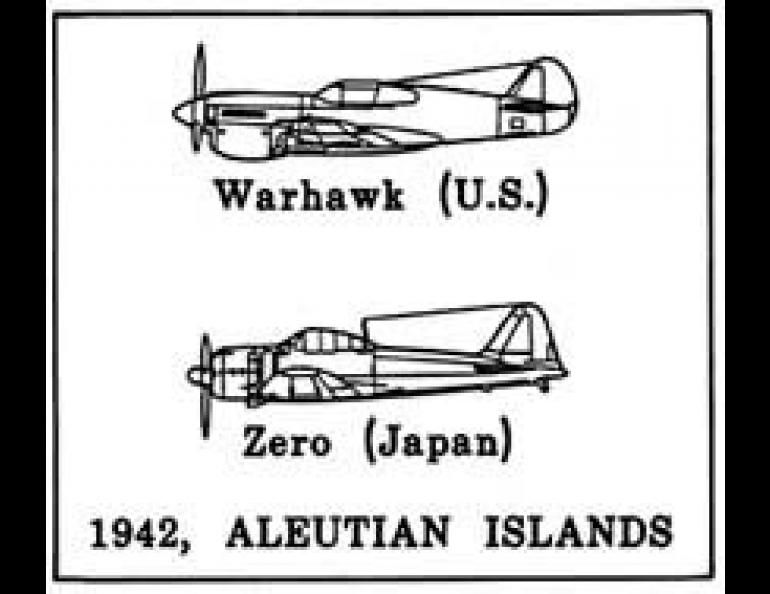

The Aleutians, 1942--Revisited
News of the war in the Falkland Islands must surely bring back memories to veterans of the struggle for the Aleutians in World War II. There are some uncanny similarities.
The Falklands, if the island of South Georgia is included, extend from 51° to 55° south latitude. The Aleutians, from Amchitka Island to Cold Bay, extend from 51° to 55° north latitude. The weather of both island groups is among the world's worst, and rain or snow can be expected on about 3 out of 4 days in an average year. The winds are extreme, the flying conditions mostly absurd, and the seas treacherous. None of this makes for efficient military operations, as those veterans of the Aleutians in the 1940s can well attest.
The Japanese bombed Dutch Harbor on June 3, 1942 in the opening round of the war for the Aleutians. Now, almost exactly 40 years later, a similar struggle is going on between the British and the Argentines for the Falkland Islands.
Many comparisons can be drawn between the two conflicts. For instance, the loss of two British Harriers to poor flying conditions on May 6 make it appear that the weather may claim more aircraft than actual combat, just as it did in the Aleutians in 1942. However, let us consider the relative merits of the opposing fighter aircraft.
When World War II broke out, the Americans received a nasty surprise when they found that the Japanese (who, the experts insisted, could build only inferior copies of our own airplanes) had designed and constructed a nifty little fighter that could fly circles around anything that we had: the Mitsubishi Zero. The Zero was light, nimble and swift, and it had enormous range for a fighter. However, the early models had no armor for pilot or fuel tanks, a deficiency which was to be corrected later in the war.
By comparison, America's front-line fighter strength at the time consisted mainly of P-40 Warhawks. Aerodynamically, the P-40 was relatively sluggish and no match for the Zero, but its sturdy construction and heavy firepower evened the scales.
Forty years later, several tons heavier and much larger, the principal combatants in the Falklands are Britain's Sea Harrier and Argentina's French-built Mirage III (some of these are modified versions built in Israel and called the Dagger).
The Harrier is fairly bulky, intended primarily for ground support, and does not have the fighter potential of the sleek Mirage. But it does not require long runways on which to take off or land, and can even hover like a helicopter.
Performance alone probably will not decide the contest between these two aircraft. Rather, the sophisticated weaponry with which both are equipped will play the dominant role.
The world will be watching this performance from the wings, with different nations evaluating where they should invest their next few billions in armament.
The situation is reminiscent of the attention given by the Americans to an intact Zero which was recovered from Akutan Island after the attack on Dutch Harbor. It was only after flying the Zero for many weeks--examining its strengths and its weaknesses--that the Americans designed and built an aircraft that could match the Zero's excellent flying qualities. This airplane was the Navy's F6F Hellcat, which shot down more Japanese aircraft than any other fighter during the war.






